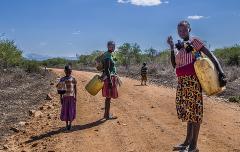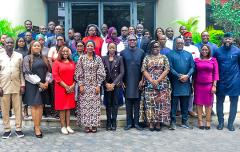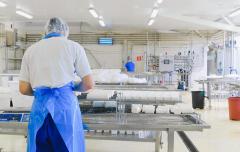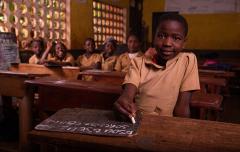Cooling Conundrum: Delivering Cooling Solutions for All
A new International Energy Agency (IEA) report raises rightful concern about the proliferating use of air conditioners worldwide and the profound impacts on energy demand and climate-related pollution if more efficient cooling appliances are not found soon.
To cite just one report projection: based on current trends of soaring AC use in India and other developing countries, global cooling demand growth by 2050 will require as much as all electricity demand today in the United States and Germany. In climate protection terms, such a scenario would make it all but impossible to achieve carbon-reducing goals under the Paris Climate Agreement.
Yet, despite the enormous significance of the AC issue, the IEA report does not touch on the bigger picture about the vast number of people worldwide that have no access to cooling, or the broad strategies that will be needed to close these gaps.
Cooling is a far bigger issue than staying comfortable on hot muggy days. Cooling underpins every part of society, whether it’s the fresh fruit you eat for breakfast, the vaccine that shields you from common diseases or the ceiling fan that protects your body against record high temperatures the world is now seeing.
With just over one billion people still lacking access to electricity, according to the latest research data, even more people still lack access to cooling. For many people in Sub-Saharan Africa and South Asia, especially in poor rural areas, the absence of electricity means no cooling for protecting food, vaccines and medicines. India is one of the world’s largest food producers, but as much as 40 percent of that food is wasted due to the lack of refrigeration and other supply chain bottlenecks. This is a big reason why nearly 200 million people in India are going hungry daily, according to the UN Food and Agriculture Organization (FAO).
Even in countries that do have electricity, cooling access is not a guarantee. In hot populous regions, where temperatures and urban populations are soaring, electricity outages are frequent, especially on extreme heat days when the grid cannot handle peak demand. Just this week, dozens of people in Karachi, Pakistan died from scorching temperatures and power outages, and many more fatalities are likely as temperatures are expected to exceed 50 degrees Celsius (122 degrees Fahrenheit). Access to efficient cooling solutions could save these lives.
The impacts are clear. In the midst of a heatwave, famine or epidemic, access to cooling is a life or death issue.
Solving this unprecedented challenge won’t just require hyper-efficient ACs. It will require new ways to design cities and buildings that utilize passive design, district cooling and renewable energy. It will also require integrated policies and deployment of clean cold technologies that maintain cold chains for long-distance shipments of vaccines and food.
Closing the cooling gap is the focus of Sustainable Energy for All’s Cooling for All initiative, which will focus on creating a direct intersection between three internationally agreed upon goals for the first time: the Paris Agreement; the Sustainable Development Goals and the Montreal Protocol’s Kigali Amendment. The Kigali Amendment calls for phasing out production and consumption of high-polluting refrigerants – a perfect opportunity for leveraging new technologies and approaches that could lead to leaps in cooling efficiency and access.
This summer, SEforALL, as part of Cooling for All, will present a new report that explores and quantifies cooling access gaps around the world and sets out the vast opportunities for closing these gaps with affordable, sustainable solutions.




